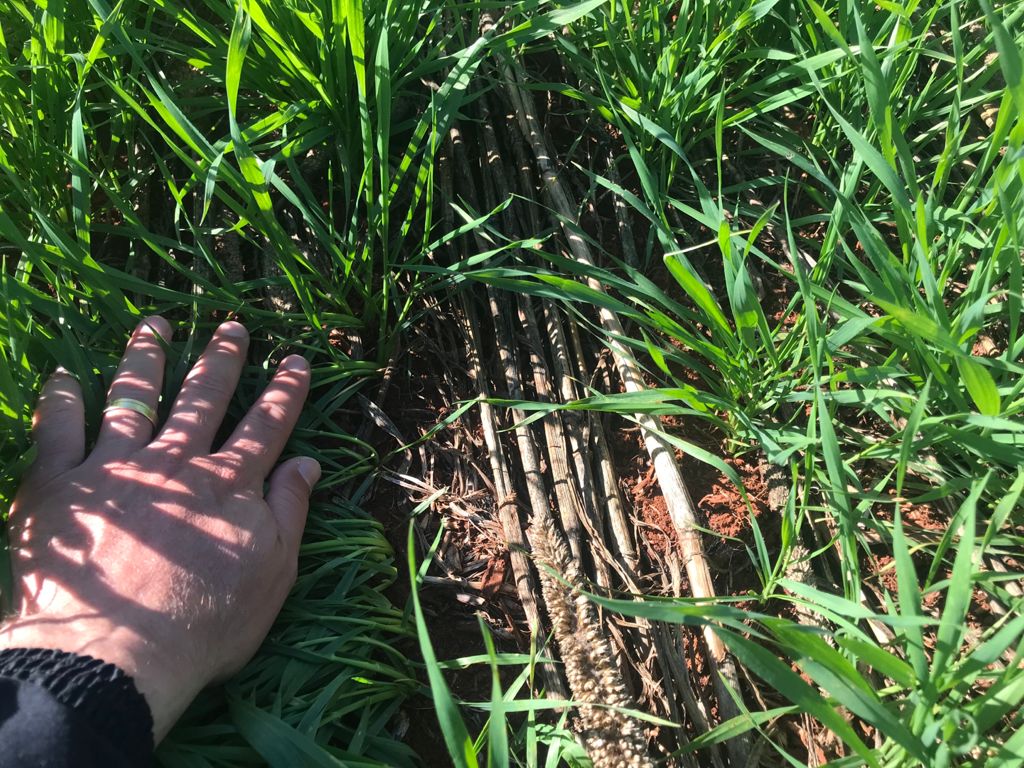In this production system, the winter crops benefit from nitrogen fixed by the leguminous soya. The health and vitality of soil plays an integral role in food production.
Unsustainable agricultural practices can affect soil health, poorly managed soil can release excess carbon dioxide, contributing to climate change. Well-managed soil is full of microorganisms which play a central role in regulating the amount of organic carbon that is stored and released back into the atmosphere.
ZERO TILL AT MARUQUE FARM, BRAZIL
Camellia’s 3,477 hectare arable farm in Maruque, Brazil produces annual crops such as soya, maize, sorghum grain, barley, beans and wheat using sustainable agricultural practices to ensure the health of our soils.
Zero Till, or No Till agriculture, was introduced to our Brazilian operations in the 1990’s as a way of reducing soil erosion. Since then Zero Till techniques have improved as technology has advanced offering multiple benefits – environmental and financial.
Crops are grown without exhausting the soil, using a balanced system where we recycle nutrients and increase microbiological activity. Seed germination and young plant growth is improved, the soil retains more organic matter and carbon, and compaction is reduced.
Zero Till disturbs the soil much less than traditional farming practises, reducing emissions of CO2. Fuel and herbicide use is also drastically lower as seeds are planted directly into the previous crop’s straw ‘blanket’, which suppresses weed growth.
Crop emergence through a bed of straw - supressing weeds
THE 3 ELEMENTS OF ZERO TILL FARMING
1. Minimal soil surface disturbance: the only disturbed soil surface is on the planting line, the rows between these lines are left with the previous crop stubble intact.
2. Keeping the soil covered; during harvesting, straw from the crop is left on the surface of the soil. This increases the absorption of water, prevents erosion and loss of nutrients by leaching, helps to maintain soil temperature, increases the humidity of the soil, encourages microbiological activity and retains carbon. The use of cover crops like millet is also important in this process, helping to maintain the soil cover and increase organic matter in the soil.
3. Crop rotation: planting different crops each time the soil is sowed improves the chemical, biological and physical structure of the soil, and increases yields. The crops are chosen according to their characteristics taking account of size of roots, species, organic matter produced and benefits to the next crop.
PRODUCTION SYSTEMS
Maruque Farm uses different production systems to ensure soil health and excellent quality produce.

PRINCIPAL PRODUCTION SYSTEM
Soya is planted in the Brazil spring (September/October) and harvested during the summer (February/March). Immediately after soya harvest, maize or sorghum is planted in February and harvested June to August.
In the following year the winter crops are rotated. Where maize or sorghum was planted a cover crop is established to cover the period after the soya harvest and before the winter wheat/barley is planted in April/May.
In this production system, the winter crops benefit from nitrogen fixed by the leguminous soya.
THE ROLE OF COVER CROPS
The cover crop keeps the soil weed free therefore avoiding the use of herbicide, as well as helping to control nematode root worm, de-compacting soil, recycling nutrients, supplying organic matter to the soil and retaining carbon. The cover crop isn't harvested, it is dried in the pre planting of wheat and then planting is done directly on the straw.

Soya after wheat

Wheat after soya/ millet

Soya after maize
REHABILITATION PRODUCTION SYSTEM
The rehabilitation production system includes a cover crop of oats together with millet in the winter and is used in areas with low soil fertility. The objective is to increase the organic matter of the soil with a mix of plants as a cover crop, so oats and millet are planted together.
The millet recycles nutrients, mainly potassium, reduces nematodes and grows rapidly during the warmer months of March and April.
Oats grow fastest during the dry and cold weather of June and July and have an aggressive root system. This helps reduce the compaction of the soils and increase the microorganisms.
This system increases the organic matter substantially. The cover crops are not harvested so all nutrition and organic matter is retained in the soil.

Soya in the reproductive period after oats
Graham McLean
Managing Director Agriculture at Camellia Plc

